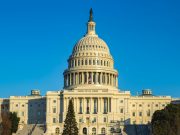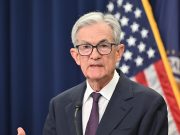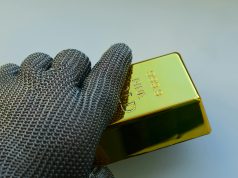
(Singapore, 30.09.2025)The US Treasury’s gold reserves have reached a new milestone, with their market value exceeding $1 trillion for the first time in history. This staggering figure is more than 90 times the official valuation of just over $11 billion, a valuation set by Congress in 1973 based on a price of just $42.22 per ounce. This dramatic revaluation is a direct result of gold’s meteoric rise, with the precious metal climbing to an all-time high of $3,833.59 per ounce this week, marking a remarkable 46% rally this year alone.
The surge in gold prices is underpinned by a confluence of global and domestic factors. Investors are flocking to bullion as a safe-haven asset amid rising geopolitical tensions, ongoing trade wars, and mounting concerns over a potential US government shutdown. The weaker dollar, which makes gold more affordable for international buyers, has also contributed to the metal’s allure. This trend has been further fueled by a resumption of interest rate cuts by the Federal Reserve, a move that makes non-interest-bearing assets like gold more attractive to investors.
The rally is a testament to gold’s enduring appeal as a hedge against market volatility and economic uncertainty. The gold-backed Exchange-Traded Funds (ETFs) have seen a significant influx of capital, with holdings at their highest since 2022. This strong institutional demand, combined with central bank purchases, has propelled gold to new heights, with analysts at major banks like Goldman Sachs and Deutsche Bank predicting the rally will continue.
The monumental increase in the value of the US gold reserves has sparked a discussion about a potential revaluation of the Treasury’s holdings. Unlike many other nations, the US government directly holds its gold reserves, with the Federal Reserve holding corresponding gold certificates. An update to the official book value of these reserves to reflect current market prices would unlock an estimated $990 billion in liquidity for the Treasury. This windfall could cover nearly half of the projected $1.973 trillion US budget deficit for the fiscal year, a deficit level only surpassed during the peak of the 2020 and 2021 economic crises.
While this idea might seem like a simple solution to the nation’s fiscal challenges, including the recurring debt-ceiling constraints, a senior Treasury official said it’s not under serious consideration due to the far-reaching implications. Such a move would inject a massive amount of liquidity into the financial system and could prolong the Fed’s balance-sheet unwind, creating potential instability.
Despite these reservations, the US would not be the first country to revalue its gold reserves. Germany, Italy, and South Africa have all taken similar steps in recent decades to adjust the value of their holdings to reflect market realities. However, for now, the US government’s official stance remains committed to the fixed, decades-old valuation.
Fort Knox and the Conspiracy Theories
The majority of the US gold hoard, which totals approximately 261.5 million ounces, is housed in a network of secure depositories. Just over half of this colossal stash is stored in the fabled deep-storage vault at Fort Knox, Kentucky, a location chosen in the 1930s to protect it from foreign military threats. The remaining reserves are held in depositories in West Point, Denver, and a vault 80 feet below the Federal Reserve building in lower Manhattan.
However, the immense value and secretive nature of these reserves have not been without controversy. In a surprising twist, conspiracy theories recently circulated, fueled by comments from prominent figures like President Donald Trump and billionaire Elon Musk, questioning whether the gold at Fort Knox is, in fact, still there.
“We’re going to go to Fort Knox — the fabled Fort Knox — to make sure the gold is there,” President Trump stated at the time. “If the gold isn’t there, we’re going to be very upset.” These off-hand remarks reignited old rumors and highlighted the public’s fascination and occasional skepticism regarding the government’s immense gold holdings.
Broader Market Impact: Beyond Gold
The “golden rally” is not an isolated event. It is part of a broader surge across the precious metals market. Silver, platinum, and palladium have all experienced strong gains, with silver climbing to its highest price since 2011 and platinum surpassing $1,600 per ounce for the first time since 2013. The gains in these metals are driven by persistent market tightness and concerns about dwindling stockpiles, exacerbated by supply deficits and potential US import tariffs under a Section 232 investigation into critical minerals.
The rally in precious metals highlights the fragile state of the global economy and the deep-seated anxieties among investors. As the US government faces a potential shutdown and the Federal Reserve navigates the complexities of monetary policy, gold and its precious metal peers are serving as a crucial barometer of market sentiment, offering a tangible store of value in an increasingly uncertain world.





































